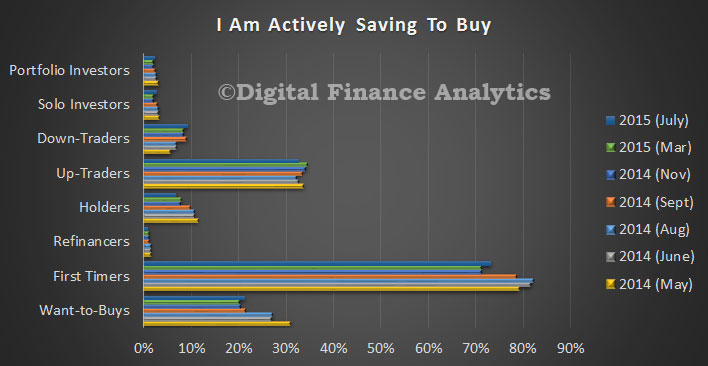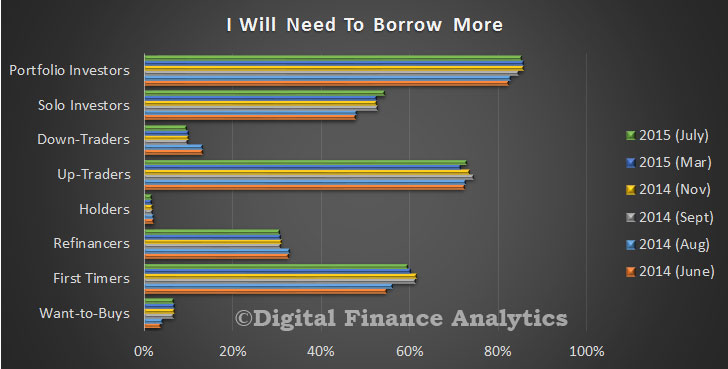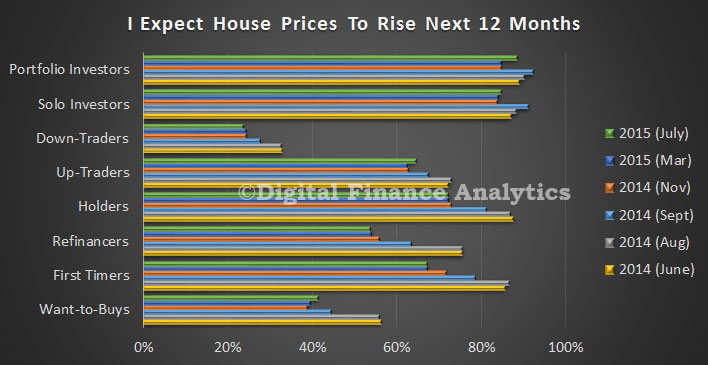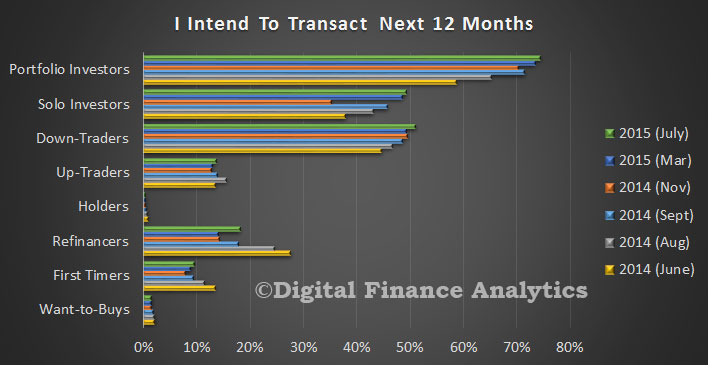From Mortgage Professional Australia.
Lending to tighten as banks look to avoid mortgage risk
Specific postcodes or suburbs won’t be denied home loans, but one financial analyst believes Australia’s big banks are moving to a path of more restrictive lending.
Martin North, the principal of Digital Finance Analytics, believes major lenders will soon be introducing different lending criteria and stricter servicing requirements as they look to reduce the amount of risk they carry on their mortgage books.
“I think what we’re seeing is a general drift towards the end of the more sporty loans we were seeing, the dial has been turned up in terms of the capital requirements banks are facing and the risk dial has been turned up as APRA says these are the things we want to see happen,” North said.
“We’re not going to see ghettos were you can’t get a loan, but LVRs are going to be dialled back, it’s going to be harder to get interest only loans and there could be changes to terms and conditions so we see things such as risk premiums on loans for certain areas,” he said.
North’s comments come after Fairfax media revealed earlier this week that NAB has two groups totalling more than 80 Australian postcodes identified as either being “areas where significant deterioration in credit risk has been observed” (Group A postcodes) or “areas which are exhibiting characteristics which may indicate future deterioration in credit risk” (Group B postcodes).
There are 40 Group A postcodes, which are predominantly located in areas affected by the downturn in the resource and manufacturing industries, with 22 Western Australian and 11 Queensland postcodes in the group.
The remaining seven postcodes are found in South Australia, Northern Territory and Tasmania. The Group A postcodes are now subject to a 70% LVR.
The bank has classified 43 postcodes in Group B, with 34 of them located in Sydney, while five are found in Melbourne and suburbs in this group are now subject to an LVR of 80%.
According to North, the identified postcodes present risks due to a number of different reasons.
“The first reason is the probability of default, which is tied to economic and employment conditions, and would apply to places in Western Australia or Queensland where the mining boom has deteriorated or areas like South Australia where the manufacturing industry has been hit,” he said.
“There are also concentration risks where you have a location that has been popular and a bank has a lot of people in that area with loans and they’ll then look to throttle back on lending to there.
“The final one is overvaluation, where a bank thinks the value of properties in the area are extended and they’re concerned that in a corrective market they’ll be worth less than what the loan. These are usually areas that have seen rapid growth and an area like inner Sydney would be a good example of that.”
While banks such as NAB may be introducing measures to reduce the level of risk they take on in the future, North said the current risk position of their mortgage portfolios may not yet truly be known.
“If you look back at the loans that were written over the last 12 – 18 months when lenders were being more aggressive, then I would estimate that about 8 – 9% wouldn’t meet today’s lending criteria.
“There’s some implicit risk there and most mortgage trouble start in the first two or three years, so in the near future we’ll see whether that leads to an increase in defaults.”




